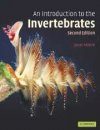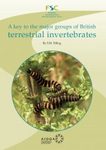![An Introduction to the Invertebrates An Introduction to the Invertebrates]()
Click to have a closer look
About this book
Contents
Customer reviews
Biography
Related titles
About this book
So much has to be crammed into today's biology courses that basic information on animal groups and their evolutionary origins is often left out. This is particularly true for the invertebrates. The second edition of Janet Moore's An Introduction to the Invertebrates fills this gap by providing a short updated guide to the invertebrate phyla, looking at their diverse forms, functions and evolutionary relationships. This book first introduces evolution and modern methods of tracing it, then considers the distinctive body plan of each invertebrate phylum showing what has evolved, how the animals live, and how they develop. Boxes introduce physiological mechanisms and development. The final chapter explains uses of molecular evidence and presents an up-to-date view of evolutionary history, giving a more certain definition of the relationships between invertebrates. This user-friendly and well-illustrated introduction will be invaluable for all those studying invertebrates.
Contents
Preface; Acknowledgements; Illustration acknowledgements; 1. The process of evolution: natural selection; 2. The pattern of evolution: methods of investigation; 3. Porifera; 4. Cnidaria; 5. On being a worm; 6. Platyhelminthes; 7. Nemertea; 8. Nematoda; 9. Annelida; 10. Mollusca: general and Gastropoda; 11. Mollusca: Bivalvia and Cephalopoda; 12. Arthropoda: general; 13. Crustacea; 14. Chelicerata and Myriapoda; 15. Insecta; 16. Animals with lophophores; 17. Echinodermata; 18. Invertebrate Chordata and Hemichordata; 19. Development; 20. Invertebrate evolutionary history; Further reading and references; Glossary; Index.
Customer Reviews
Biography
Janet Moore is former Director of Studies in Biological Sciences at New Hall, Cambridge where she is now an Emeritus Fellow. Her research career has focused on land and freshwater nemertines.
Textbook
By: Janet Moore
355 pages, 96 line illus, figs
'Anyone who is concerned about biological diversity and the current extinction crisis realizes that we desperately need to train more people in invertebrate biology ! I strongly recommend this book to all undergraduates who are interested in biology: it provides a lucid, yet comprehensive, introduction to a significant proportion of the diversity of life on Earth.' Trends in Parasitology 'Janet Moore's An Introduction to the Invertebrates offers something different: a smartly annotated, comprehensive outline. The writing is clear, simple and to the point. The chapters are organised taxonomically, but within the chapters the topic heads are broad zoological questions, instead of the drearily repetitive '! nervous system, excretory system, reproduction, development, etc !'.' Invertebrata, Tasmania's Invertebrate Newsletter 'A very accessible book that will serve as an excellent overview of the invertebrate animals.' Wildlife Activist




































